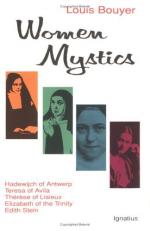|
This section contains 6,378 words (approx. 22 pages at 300 words per page) |

|
SOURCE: Murk-Jansen, Saskia M. “The Use of Gender and Gender-Related Imagery in Hadewijch.” In Gender and Text in the Later Middle Ages, edited by Jane Chance, pp. 52-68. Gainesville: University Press of Florida, 1996.
In the following essay, Murk-Jansen explores Hadewijch's use of gender reversal and gendered imagery to create a language of God oriented toward a female audience.
Images are multivalent, and none more so than images of gender, which not only reflect a multiplicity of meanings to any one reader but also mean different things to men and women. Furthermore, gender-related images are not always primarily, or even at all, about gender, about the differing roles of women and men apparently reflected by the image.1 In this respect, Ricoeur's theory of imagery is a more satisfying explanation of the way in which gender images function than that put forward by those who see symbols and images as...
|
This section contains 6,378 words (approx. 22 pages at 300 words per page) |

|


